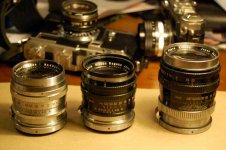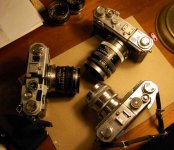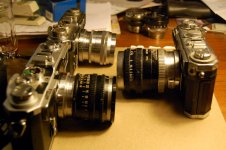Only with an SLR can you see what is in focus, and exactly what is not in focus, and how the DOF transition occurs, and where.
Actually you can't see this "exactly," only as an approximation, because depth of field also depends on a number of other factors including the degree of enlargement of the final image, viewing distance to the final image, and the observer's visual acuity. This makes any depth-of-field calculation simply an estimate.
The view through an SLR finder corresponds to only a modest degree of final enlargement, which accounts for the experience that many of us have had when using an SLR of being
sure the image we saw through the finder had the focus right where we wanted it, only to find in the final image that the plane of best focus was somewhere else.
Another thing that not everybody knows is that the fresnel condenser lens in an SLR's focusing screen imposes a limit on the lens' effective aperture. The fresnel lens doesn't capture all the rays emitted by the lens, only their center portion, giving the same effect as if the aperture were stopped down slightly. With a typical focusing screen (or so I've read) the cutoff is at about f/2.8, meaning that a lens faster than this may appear to have more depth-of-field at wide apertures than it really does. (Canon and Nikon used to offer accessory focusing screens with condensers optimized for wide-aperture lenses, but they're not easy to find.)
So while it's true that an SLR viewfinder may make the photographer
feel he has exact control over depth-of-field, that sense is partly an illusion!










